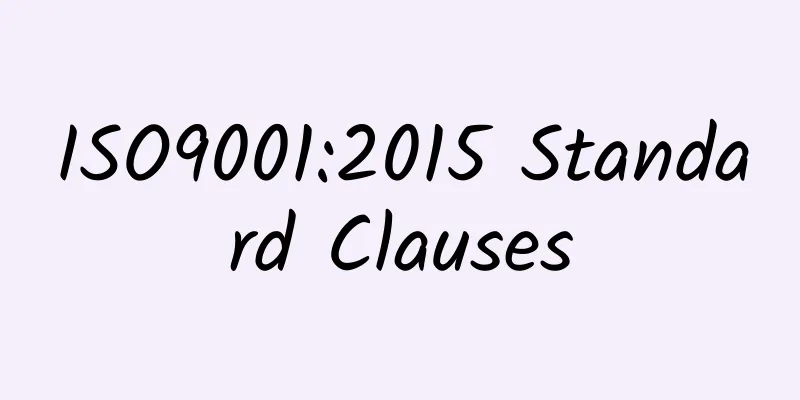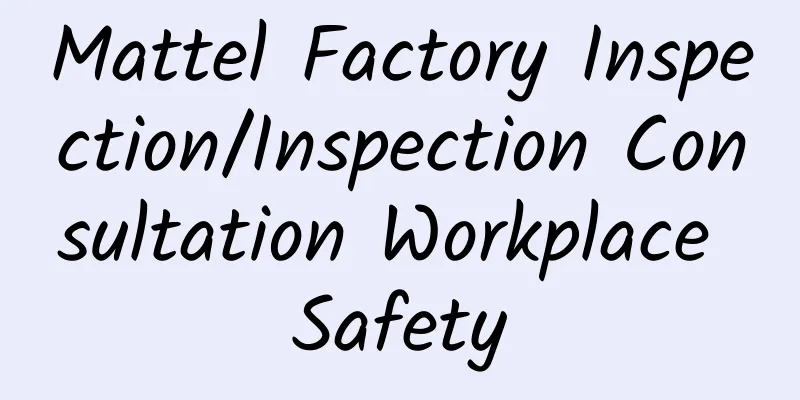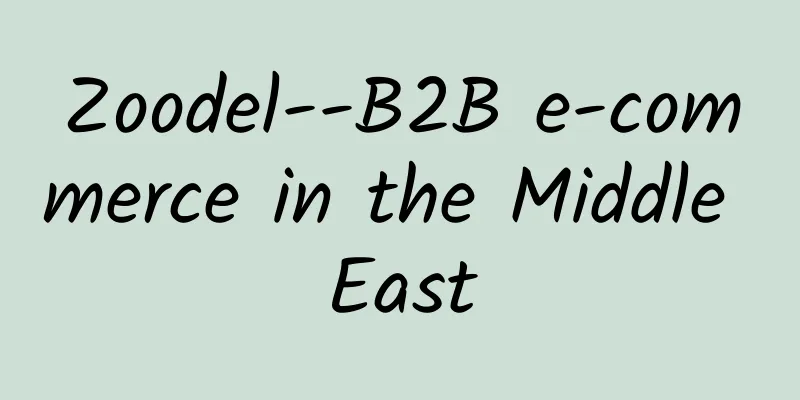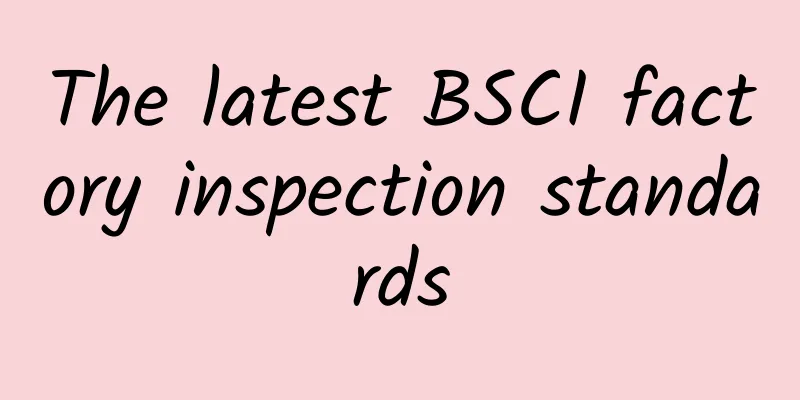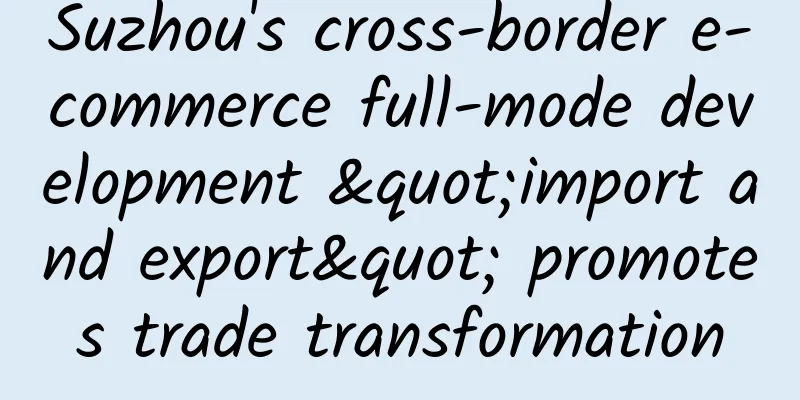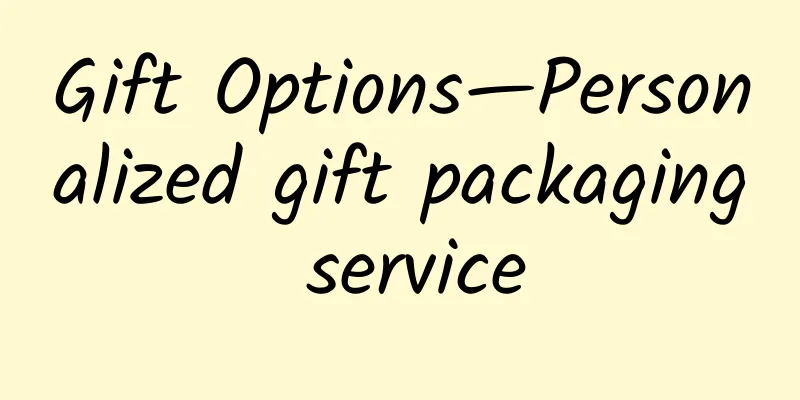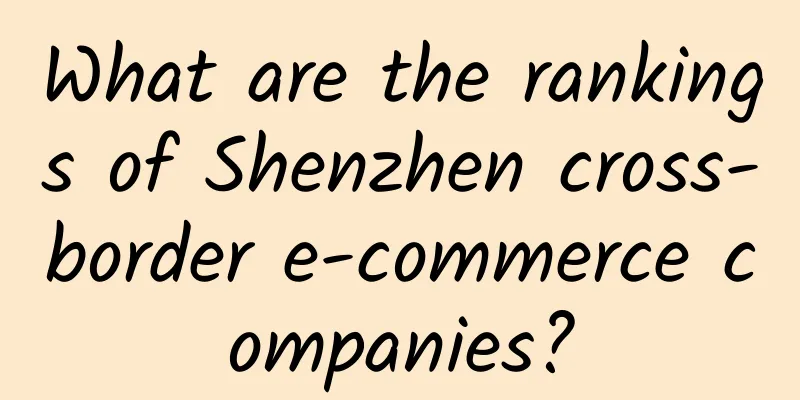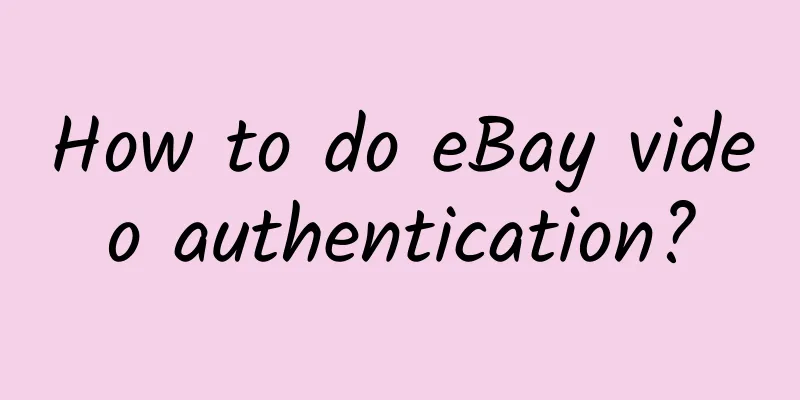|
Preface Committee Comments Draft
1 Scope
2 Normative references
3 Terms and definitions
4 Background of the organization
4.1 Understanding the organization and its context
4.2 Understanding the needs and expectations of stakeholders
4.3 Determination of the scope of the quality management system
4.4 Quality Management System
5 Leadership
5.1 Leadership and commitment
5.2 Quality Policy
5.3 Organizational roles, responsibilities and authorities
6 Planning
6.1 Responses to risks and opportunities
6.2 Planning of quality objectives and their implementation
6.3 Planning of Changes
7 Support
7.1 Resources
7.2 Capabilities
7.3 Awareness
7.4 Communication
7.5 Documented information
8 Run
8.1 Operational planning and control
8.2 Determination of market demand and communication with customers
8.3 Operational planning process
8.4 Control of Externally Supplied Products and Services
8.5 Product and Service Development
8.6 Product Production and Service Provision
8.7 Release of Products and Services
8.8 Nonconforming Products and Services
9 Performance Evaluation
9.1 Monitoring, measurement, analysis and evaluation
9.2 Internal Audit
9.3 Management Review
10. Continuous Improvement
10.1 Nonconformity and Corrective Action
10.2 Improvements Quality Management System - Requirements
1 Scope This International Standard specifies quality management system requirements for organizations with the following needs:
a) Need to demonstrate its ability to consistently provide products and services that meet customer requirements and applicable legal and regulatory requirements;
b) Aims to enhance customer satisfaction through the effective application of the system, including a process for continual improvement of the system, and ensuring conformity to customer and applicable statutory and regulatory requirements.
Note 1: In this standard, the term "product" applies only to:
a) the goods and services that are intended to be provided to customers or requested by customers;
b) Any expected output from running the process.
Note 2: Legal and regulatory requirements may be referred to as statutory requirements.
2 Normative references The clauses in the following documents constitute the clauses of this standard through reference in this standard. For all dated references, only the referenced version is applicable.
For any un-dated referenced documents, the latest version (including any revisions) shall apply to this standard.
ISO9000:2009 Quality Management System Fundamentals and Terminology
3 Terms and Definitions This standard adopts the terms and definitions established in GB/T19000.
4 Organizational context
4.1 Understanding the organization and its context The organization should identify external and internal matters that are relevant to the organization's purpose, strategic direction, and that affect the ability of the quality management system to achieve its intended results.
The organization should update this information when necessary.
In determining these relevant internal and external matters, organizations should consider the following:
a) changes and trends that may have an impact on the organization’s objectives;
b) Relationships with stakeholders, as well as their ideas and values;
c) organizational management, strategic priorities, internal policies and commitments;
d) Acquisition and priority supply of resources and technological changes.
Note 1 to entry: The external environment may consider legal, technological, competitive, cultural, social, economic and natural aspects, whether international, national, regional or local.
Note 2: The internal environment may refer to the organization’s philosophy, values and culture.
4.2 Understanding the needs and expectations of interested parties The organization shall determine:
a) Interested parties related to the quality management system
b) Requirements of interested parties The organization shall update the results determined above in order to understand and meet the needs and expectations that affect customer requirements and customer satisfaction.
The organization should consider the following interested parties:
a) Direct customers
b) End-user
c) Suppliers, distributors, retailers and others in the supply chain
d) Legislative body
e) Other NOTE: Addressing current and anticipated future needs can lead to the identification of opportunities for improvement and change.
4.3 Determine the scope of the quality management system The organization shall define the boundaries and application of the quality management system to determine its scope.
When determining the scope of the quality management system, the organization shall consider:
a) Internal and external matters mentioned in clause 4.1 of the Standard
b) The requirements of Clause 4.2 of the standard shall describe the scope of the quality management system in terms of the products, services, major processes and locations covered by the organization.
When describing the scope of the quality management system, exclusions from the quality management system and their justification shall be documented for any clauses of the standard that are not applicable. Exclusions shall be limited to clauses 7.1, 4 and 8 of the standard and shall not affect the organization's ability and responsibility to ensure that products and services meet requirements and customer satisfaction. Outsourcing of processes is not a valid reason for exclusions.
NOTE External suppliers may be suppliers or sister organizations outside the organization’s quality management system.
The scope of the quality management system shall be documented.
4.4 Quality Management System
4.4.1 General The organization shall establish, implement, maintain and continually improve the quality management system, processes and their interactions in accordance with the requirements of this standard.
4.4.2 Process approach The organization shall apply a process approach to its quality management system. The organization shall:
a) determine the processes needed for the quality management system and their application throughout the organization;
b) determine the required inputs and expected outputs for each process;
c) determine the sequence and interaction of these processes;
d) determine the risks to products, services and customer satisfaction from unintended outputs or process failures;
e) determine the necessary criteria, methods, measurements and related performance indicators to ensure the effective operation and control of these processes;
f) identify and provide resources;
g) specifying responsibilities and authorities;
h) implementing the actions necessary to achieve the planned results;
i) monitor and analyse these processes and, if necessary, change them to ensure that they continue to produce the desired results;
j) Ensure continual improvement of these processes.
5 Leadership
5.1 Leadership and Commitment
5.1.1 Leadership and commitment to the quality management system Top management shall demonstrate its leadership and commitment to the quality management system by:
a) ensuring that the quality policy and quality objectives are established and consistent with the strategic direction of the organization;
b) ensuring that the quality policy is understood and implemented within the organization;
c) ensuring that quality management system requirements are integrated into the organization’s business operations;
d) raising awareness of the process approach;
e) ensuring the availability of resources required for the quality management system;
f) communicate the importance of effective quality management and meeting the requirements of the quality management system, products and services;
g) ensuring that the quality management system achieves its intended outputs;
h) involve, direct and support employees in contributing to the effectiveness of the quality management system;
i) enhance continuous improvement and innovation;
j) Support other managers to demonstrate leadership in their areas of responsibility.
5.1.2 Leadership and commitment to customer needs and expectations Top management shall demonstrate leadership and commitment to customer focus by:
a) Risks that may affect product and service conformity and customer satisfaction are identified and addressed;
b) customer requirements are identified and met;
c) Maintaining a focus on consistently providing products and services that meet customer and regulatory requirements;
d) maintain a focus on enhancing customer satisfaction;
NOTE: “Business” in this International Standard can be broadly understood as activities that are important to the purpose of the organization’s existence.
5.2 Quality Policy Top management shall establish a quality policy which shall:
a) be consistent with the purpose of the organization;
b) provide a framework for establishing quality objectives;
c) include a commitment to meet applicable requirements;
d) include a commitment to continual improvement of the quality management system.
The quality policy shall:
a) documented;
b) be communicated within the organization;
c) be available to the relevant party, where applicable;
d) be reviewed for continuing suitability.
NOTE: Quality management principles may serve as the basis for a quality policy.
5.3 Organizational roles, responsibilities and authorities Top management should ensure that relevant responsibilities and authorities are defined and communicated within the organization.
Top management shall be accountable for the effectiveness of the quality management system and shall define the responsibilities and authorities for:
a) ensure that the quality management system conforms to the requirements of this International Standard;
b) ensuring that processes interact and produce desired results;
c) reporting to top management on the performance of the quality management system and any needs for improvement;
d) ensure that awareness of meeting customer requirements is promoted throughout the organization. 6 Planning
6.1 Responses to risks and opportunities When planning the quality management system, the organization shall determine the risks and opportunities that need to be addressed, taking into account the requirements of 4.1 and 4.2, in order to:
a) ensuring that the quality management system achieves its intended results;
b) ensuring that the organization can consistently achieve product and service conformity and customer satisfaction;
c) prevent or reduce unintended impacts;
d) achieve continual improvement.
The organization should plan:
a) responses to risks and opportunities;
b) How
1) Incorporate and apply these measures into the quality management system processes (see 4.4)
2) Evaluate the effectiveness of these actions. Any risk and opportunity responses taken should be commensurate with their potential impact on product and service conformity and customer satisfaction.
Note: Optional risk response measures include risk avoidance, risk reduction, risk acceptance, etc.
6.2 Planning of quality objectives and their implementation The organization should establish quality objectives at relevant functions, levels and processes.
Quality objectives should:
a) Consistent with the quality policy
b) Related to product and service conformity and customer satisfaction
c) Measurable (when feasible)
d) Consider applicable requirements
e) Get monitored
f) Get communication
g) Updated when appropriate. The organization shall document its quality objectives.
When planning the achievement of its objectives, the organization should determine:
a) what to do;
b) the resources required (see 7.1);
c) Responsible person;
d) timetable for completion;
e) How the results are evaluated.
6.3 Planning of changes The organization shall determine the need for and opportunities for changes to maintain and improve the performance of the quality management system.
The organization should plan and systematically implement changes, identify risks and opportunities, and evaluate the potential consequences of the changes.
NOTE: Specific requirements for change control are set out in Clause 8.
7 Support
7.1 Resources
7.1.1 General The organization shall determine and provide the resources needed to establish, implement, maintain and improve the quality management system.
Organizations should consider:
a) Existing resources, capabilities, and limitations
b) Outsourced products and services
7.1.2 Infrastructure The organization shall determine, provide and maintain the infrastructure needed for its operation and to ensure conformity of products and services and customer satisfaction.
Note: Infrastructure may include:
a) Buildings and related facilities
b) Equipment (including hardware and software)
c) Transport, communication and information systems
7.1.3 Process environment The organization shall determine, provide and maintain the process environment needed for its operation and to ensure conformity of products, services and customer satisfaction.
NOTE The process environment may include physical, social, psychological and environmental factors (e.g. temperature, handling, ergonomics, atmospheric composition).
7.1.4 Monitoring and measuring equipment The organization shall determine, provide and maintain the monitoring and measuring equipment needed to verify product conformity and ensure that the monitoring and measuring equipment is suitable for use.
The organization shall maintain appropriate documented information to provide evidence that monitoring and measuring equipment meets the requirements for its intended use.
Note 1 to entry: Monitoring and measuring equipment may include measuring devices and evaluation methods (e.g. questionnaires).
NOTE 2 Monitoring and measuring equipment is calibrated and/or verified at specified intervals or before use, against measurement standards traceable to international or national standards.
7.1.5 Knowledge The organization shall determine the knowledge required for the operation of the quality management system and its processes to ensure conformity of products and services and customer satisfaction. This knowledge shall be maintained, protected and made accessible when required.
When responding to changing needs and trends, the organization should consider its existing knowledge base and determine how to acquire the additional knowledge that is necessary. (See 6.3)
7.2 The capability organization shall:
a) determine the necessary competence of persons performing work under the organization’s control that affects quality performance;
b) ensure that these persons are competent based on appropriate education, training and experience;
c) where applicable, take actions to acquire the necessary competence and evaluate the effectiveness of these actions;
d) maintain documented information to provide evidence of capability.
NOTE Appropriate measures may include, for example, provision of training, coaching, reallocation of tasks, recruitment of competent personnel, etc.
7.3 Awareness Personnel working under the organization’s control shall be aware of:
a) Quality Policy
b) Related quality objectives
c) their contribution to the effectiveness of the quality management system, including the benefits of improved quality performance
d) Consequences of deviations from quality management system requirements
7.4 Communication The organization shall determine its internal and external communication needs related to the quality management system, including:
a) Content of communication
b) Timing of communication
c) Communication target
7.5 Documented information
7.5.1 General The organization’s quality management system shall include:
a) Document information required by this standard
b) documented information determined by the organization to be necessary to ensure the effective operation of the quality management system Note: The amount and level of quality management system documentation may vary from organization to organization, depending on:
a) the size of the organization, types of activities, processes, products and services;
b) the complexity of the processes and their interactions;
c) Capabilities of personnel.
7.5.2 Preparing and updating When preparing and updating documents, the organization shall ensure appropriate:
a) Identification and description (e.g. title, date, author, index number, etc.)
b) format (e.g. language, software version, graphics) and medium (e.g. paper, electronic)
c) Review and approval to ensure suitability and adequacy
7.5.3 Document control Documented information required by the quality management system and this International Standard shall be controlled to ensure:
a) The places where documents are needed can obtain the applicable documents
b) The documents are adequately protected, such as to prevent leakage, misuse and damage.
Where applicable, the organization shall:
a) distribution, access, recycling, use;
b) storage and protection, including keeping it legible;
c) control of changes (e.g. version control);
d) Retention and Disposal.
Documents of external origin determined by the organization to be necessary for the planning and operation of the quality management system shall be identified and controlled.
Note: "Access" means permission only to inspect the document, or authorization to inspect and modify the document.
8 Run
8.1 Operational planning and control The organization shall plan, implement and control the processes needed to meet the requirements and measures identified in 6.1 of the standard, including:
a) establishing process criteria;
b) Implement process control in accordance with the requirements of the guidelines;
c) maintain sufficient documented information to ensure that the processes are carried out as planned.
The organization shall control planned changes, evaluate the consequences of unexpected changes and, if necessary, take actions to mitigate any adverse effects (see 8.4).
The organization shall ensure that functions or processes performed by external providers are controlled.
Note: The performance of an organization's functions or processes by an external provider is often referred to as outsourcing.
8.2 Determination of market demand and communication with customers
8.2.1 General The organization shall implement the processes needed to communicate with customers to determine their requirements for products and services.
Note 1: “Customer” refers to current or potential customer;
NOTE 2 The organization may communicate with other interested parties to determine additional requirements for products and services (see 4.2).
8.2.2 Determination of requirements related to products and services, where applicable, the organization shall determine:
a) customer-specified requirements, including requirements for delivery and post-delivery activities;
b) requirements that are necessary for the specified use or known intended use, although not explicitly stated by the customer;
c) legal and regulatory requirements applicable to products and services;
d) Any additional requirements considered necessary by the organization.
NOTE Additional requirements may include requirements raised by relevant interested parties.
8.2.3 Review of requirements related to products and services The organization shall review requirements related to products and services. The review shall be conducted before the organization makes a commitment to provide products to the customer (e.g. submitting a tender, accepting a contract or order, and accepting changes to a contract or order), and shall ensure that:
a) product and service requirements have been defined and agreed;
b) the requirements of the contract or order which differ from those previously stated have been resolved;
c) the organization has the ability to meet specified requirements.
Information on the review results should be documented.
If the customer does not provide a documented requirement, the organization shall confirm the customer requirement before accepting it.
If product and service requirements change, the organization should ensure that relevant documented information is modified and that relevant personnel are made aware of the changed requirements.
NOTE: In some cases it may not be practical to conduct a formal review of each order and, as an alternative, a review of the relevant product information provided to the customer may be conducted.
8.2.4 Customer communication The organization shall determine and implement arrangements for communicating with customers regarding:
a) Product and service information;
b) processing of inquiries, contracts or orders, including amendments thereto;
c) customer feedback, including customer complaints (see 9.1);
d) where applicable, the handling of customer property;
e) where relevant, specific requirements for emergency response measures.
8.3 Operation Planning To prepare for the realization of products and services, the organization shall implement processes to determine the following, including, where applicable:
a) requirements for products and services, taking into account related quality objectives;
b) identifying and addressing risks associated with achieving product and service conformity requirements;
c) determine resource requirements for products and services;
d) acceptance criteria for products and services;
e) verification, validation, monitoring, inspection and testing activities required for products and services;
f) generation and communication of performance data;
g) Requirements for traceability, product protection, delivery of products and services and post-delivery activities.
The output form of planning should be convenient for the operation of the organization.
Note 1 to entry: A document that defines the processes of the quality management system (including product and service realization processes) and the resources to be applied for a specific product, project or contract is called a quality plan.
NOTE 2 The organization may also apply the requirements of 8.5 to the development of product and service realization processes.
8.4 Control of Externally Supplied Products and Services
8.4.1 General The organization shall ensure that externally provided products and services meet specified requirements.
NOTE When an organization arranges for external providers to perform its functions and processes, this implies that products and/or services are provided externally.
8.4.2 Type and extent of control over external providers The type and extent of control over external providers and the processes, products and services they supply depends on:
a) Identified risks and their potential impacts
b) The extent to which the organization and external suppliers share the responsibility for controlling external supply processes
c) Potential control capabilities The organization shall establish and implement criteria for the evaluation, selection and re-evaluation of external suppliers based on their ability to provide product according to the organization's requirements.
Information on the evaluation results should be documented.
8.4.3 Documented information provided to external providers Where applicable, the documented information provided to external providers shall describe:
a) the products and services provided, and the processes implemented;
b) requirements for the release or approval of products, services, procedures, processes and equipment;
c) personnel competence requirements, including necessary qualifications;
d) quality management system requirements;
e) the organization's control and monitoring of the performance of external providers;
f) verification activities that the organization or its customer intends to carry out at the supplier’s site;
g) requirements for handling products from external suppliers to the organization’s site;
The organization should ensure that the specified requirements are adequacy and appropriate before communicating them to external providers.
The organization shall monitor the performance of external providers and shall document the results of the monitoring.
8.5 Development of products and services
8.5.1 Development process The organization shall adopt a process approach to planning and implementing the product and service development process.
When determining the stages and controls for product and service development, the organization should consider:
a) The characteristics, cycle and complexity of development activities;
b) customer and statutory and regulatory requirements for specific process stages or controls;
c) key requirements for specific types of products and services determined by the organization;
d) standards or industry codes to which the organization has committed itself;
e) Risks and opportunities associated with the following development activities:
1) The characteristics of the products and services being developed, and the potential consequences of failure
2) The degree of control that customers and other interested parties expect over the development process
3) Potential impact on the organization’s ability to consistently meet customer requirements and enhance customer satisfaction
f) Internal and external resources required for product and service development
g) Responsibilities and authorities of people and groups in the development process
h) The need for interface management among people and groups participating in development activities
i) Management of requirements and interfaces for customer and user participation in development activities
j) Information needed to document the development process, outputs and their suitability for use
k) Activities required to transform development into product and service delivery
8.5.2 Development Control Control of the development process shall ensure:
a) The results to be achieved by the development activities are clearly defined
b) Development inputs should be fully specified to avoid ambiguity, conflict and clarity;
c) The form of development output should be convenient for subsequent product production and service provision, as well as related monitoring and measurement;
d) Issues raised during the development process are resolved or managed, or prioritized before moving on to the next step;
e) The planned development process is implemented, the output of the development meets the input requirements, and the objectives of the development activities are achieved;
f) The products produced and services provided according to the development results meet the usage requirements;
g) Maintain appropriate change control and configuration management throughout the product and service development process and any subsequent changes to the product.
8.5.3 Transfer of development The organization shall not transfer development to product production and service provision unless all unfinished or proposed actions in the development activities are completed or managed without adversely affecting the organization's ability to consistently meet customer, legal and regulatory requirements and enhance customer satisfaction.
8.6 Product Production and Service Provision
8.6.1 Control of product production and service provision The organization shall produce products and provide services under controlled conditions. When applicable, controlled conditions shall include:
a) Obtain documented information describing product and service characteristics
b) Implementation of controls
c) where necessary, obtain documented information describing the performance of the activities and their results;
d) use of appropriate equipment;
e) Acquisition, implementation and use of monitoring and measurement equipment
f) Competence or qualifications of personnel
g) validation of any product production and service provision processes when the output of the processes cannot be verified by subsequent monitoring and measurement;
approval and reconfirmation;
h) Release, delivery and implementation of post-delivery activities for products and services
i) Prevention of nonconformities caused by human errors (e.g. mistakes, violations of regulations). Note: The ability of these processes to achieve the planned results is confirmed through the following validation activities:
a) Determination of criteria for process review and approval
b) Approval of equipment and qualification of personnel
c) Use of specific methods and procedures
d) Determination of document information requirements
8.6.2 Identification and traceability Where appropriate, the organization shall use suitable methods to identify process outputs.
The organization shall identify the status of process outputs with respect to monitoring and measurement requirements throughout product realization.
Where traceability is required, the organization shall control the unique identification of the product and maintain documented information.
NOTE: Process output is the result of any activity that is delivered to a customer (external or internal) or used as input to the next process. Process outputs include products, services,
Middleware, components, etc.
8.6.3 Customer or external supplier property The organization shall take care of the customer and external supplier property under the organization’s control or for the organization’s use. The organization shall identify, verify, protect and maintain customer and external supplier property that is used by the organization or that forms part of its products and services.
If customer or external supplier property is lost, damaged or found to be unsuitable, the organization should report it to the customer or external supplier and keep documented information.
NOTE Customer and external supplier property may include intellectual property, confidential or private information.
8.6.4 Protection of product During processing and during delivery to the intended location, the organization shall ensure that products and services, including the output of any process, are protected to maintain conformity to requirements.
Protection should also apply to components of the product and any tangible process outputs required for the provision of services.
Note: Protection may include identification, handling, packaging, storage and protection.
8.6.5 When post-delivery activities are applicable, the organization shall determine and meet the requirements for post-delivery activities that are appropriate to the product characteristics and life cycle.
Post-product delivery activities should consider:
a) Risks associated with products and services
b) Customer feedback
c) Legal and regulatory requirements Note: Post-delivery activities may include measures under warranty conditions, maintenance services specified in the contract, additional services (recycling or final disposal), etc.
8.6.6 Change Control The organization shall make changes in a planned and systematic manner, consider evaluating the potential consequences of the changes, and take necessary actions to ensure the integrity of products and services.
Information on the evaluation results of changes, approval of changes and necessary actions should be documented.
8.7 Release of products and services The organization shall verify, at appropriate stages, that products and services meet requirements according to planned arrangements. Evidence of conformity to acceptance criteria shall be maintained.
Products and services shall not be released to the customer until the planned verification of conformity has been satisfactorily completed, unless approved by a relevant authorized person and, where applicable, the customer. The person who is authorized to release product for delivery to the customer shall be identified in documented information.
8.8 Nonconforming products and services The organization shall ensure that products and services that do not conform to requirements are identified and controlled to prevent their unintended use and delivery to customers.
The organization shall take action appropriate to the nature and effects of the nonconforming product and make corrective actions when necessary. This also applies to the handling of nonconformities discovered after product delivery and during the provision of services.
When nonconforming products and services have been delivered to customers, the organization should also take appropriate corrective actions to ensure customer satisfaction is achieved.
Appropriate corrective action shall be implemented (see 10.1).
NOTE: Appropriate measures may include:
a) Isolate, stop, recall and stop supplying products and providing services;
b) inform the customer, as appropriate;
c) Authorized return for repair, downgrade, continued use, release, extension of service time or re-providing of service, and acceptance with concessions.
After nonconforming product has been corrected, it should be re-verified to demonstrate conformity to requirements.
Information on the nature of nonconforming product and any subsequent actions taken, including concessions approved, should be documented.
9 Performance Evaluation
9.1 Monitoring, measurement, analysis and evaluation
9.1.1 General The organization shall consider the identified risks and opportunities and shall:
a) Determine the objects of monitoring and measurement in order to:
- Demonstrate conformity of products and services
- Evaluate process performance (see 4.4)
- Ensure the compliance and effectiveness of the quality management system
-Evaluation of customer satisfaction
b) evaluating the performance of external providers (see 8.4);
c) determine methods for monitoring, measurement (where applicable), analysis and evaluation to ensure that the results are actionable;
d) determine the timing of monitoring and measurement;
e) determine the timing for analysis and evaluation of monitoring and measurement results;
f) determine the required quality management system performance indicators.
The organization shall establish processes to ensure that monitoring and measurement activities are carried out in a manner consistent with the monitoring and measurement requirements.
The organization should maintain appropriate documented information to provide evidence of the results.
The organization shall evaluate quality performance and the effectiveness of the quality management system.
9.1.2 Customer satisfaction The organization shall monitor data on the extent to which its requirements are met by its customers.
Where applicable, the organization shall obtain data on:
a) Customer feedback
b) Customer opinions and perceptions of the organization and its products, services and products should determine the methods of obtaining and using this data.
The organization should evaluate the data obtained to identify opportunities to enhance customer satisfaction.
9.1.3 Data analysis and evaluation The organization shall analyse and evaluate appropriate data from monitoring and measurement (see 9.1.1 and 9.1.2) and other relevant sources. This shall include the determination of applicable methods.
The results of data analysis and evaluation are used to:
a) Determine the suitability, adequacy and effectiveness of the quality management system
b) Ensure that products and services continue to meet customer requirements
c) Ensure effective operation and control of the process
d) Identify opportunities for improvement of the quality management system. The results of data analysis and evaluation should be used as input to management review.
9.2 Internal Audit The organization shall conduct internal audits at planned intervals to determine whether quality management:
a) Comply with
1) Organization’s requirements for the quality management system
2) Requirements of this standard
b) be effectively implemented and maintained. The organization shall:
a) Plan, establish, implement and maintain one or more audit programmes, including the frequency, methods, responsibilities, requirements for planning audits and reporting of audit results. The audit programme should take into account the quality objectives, the importance of the relevant processes, the associated risks and the results of previous audits.
b) Determine the criteria and scope of each audit
c) The selection of auditors and the implementation of audits should ensure the objectivity and fairness of the audit process
d) Ensure that audit results are submitted to management for review
e) Take appropriate measures promptly
f) Maintain documented information to provide evidence of the implementation of the audit programme and the audit results.
NOTE For guidance, see ISO 19011.
9.3 Management review Top management shall review the quality management system at planned intervals to ensure its continuing suitability, adequacy and effectiveness.
Management reviews should be planned and conducted taking into account the changing business environment and in line with the strategic direction of the organization.
The management review should consider the following:
a) Follow-up measures of previous management reviews
b) External or internal changes related to the quality management system
c) information on the performance of the quality management system, including trends and indicators of:
1) Nonconformity and corrective actions
2) Monitor and measure results
3) Audit results
4) Customer feedback
5) External suppliers
6) Process performance and product conformity
d) The output of the continual improvement opportunity management review should include decisions related to:
a) Opportunities for continuous improvement
b) The need for changes to the quality management system The organization shall maintain documented information that provides evidence of the results of management reviews and actions taken.
10. Continuous Improvement
10.1 Nonconformities and corrective actions When nonconformities occur, the organization shall:
a) respond, as appropriate:
1) Take measures to control and correct non-conformities
2) Dealing with the consequences of non-compliance
b) Evaluate the need for action to eliminate the causes of nonconformities and prevent their recurrence or occurrence in other areas by:
1) The review does not meet the requirements
2) Determine the cause of non-compliance
3) Determine whether similar nonconformities exist or may potentially occur
c) Implement the necessary measures
d) Review the effectiveness of corrective actions taken
e) Make necessary changes to the quality management system and corrective actions should be commensurate with the impact of the nonconformities encountered.
The organization shall document the following information:
a) The nature of the nonconformity and subsequent actions taken
b) Results of corrective actions
10.2 Improvement The organization shall continually improve the suitability, adequacy and effectiveness of the quality management system.
The organization shall improve its quality management system, processes, products and services, as appropriate, by:
a) The results of data analysis;
b) organizational changes;
c) changes in identified risks (see 6.1);
d) New opportunities;
The organization shall evaluate, prioritize and decide on the improvements that need to be implemented. |
